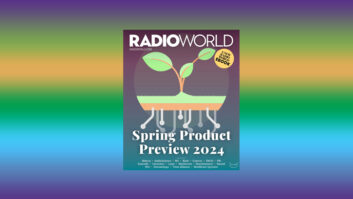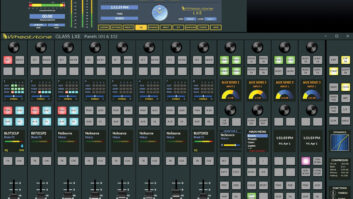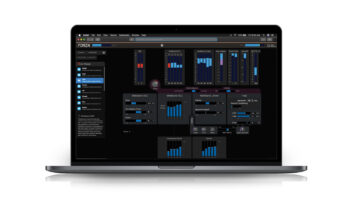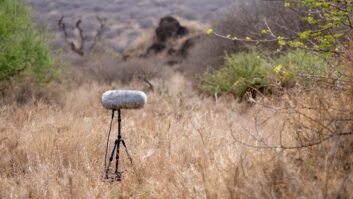
In this August 1947 image, Walter F. Myers, chief engineer of WJJD(AM) in Chicago, is checking the meters of his station’s brand new RCA BTA-50F 50 kW transmitter.
This was the first post-war 50 kW unit delivered by RCA, at a cost in excess of $250,000 (more than $2.5 million in today’s dollars).
After completing its power increase from 20 kW to 50 kW, WJJD became Chicago’s most powerful independent station. The station owner at the time was Marshall Field, the Chicago department store magnate.
WJJD operated with 50 kW on 1160 kHz as a daytime-only station, signing off at sunset to protect clear-channel KSL in Salt Lake City. WJJD started broadcasting full time in 1980 and is now known as WYLL.
The high-level plate-modulated BTA-50F replaced the pre-war BTA-50E and utilized new technologies developed by RCA during the war. Its impressive lineup of six cabinets, painted in RCA’s signature glossy umber gray, filled up an entire wall, including the front-entry door which provided access to the inside of the transmitter. Separate rooms in the transmitter building housed the transformers, blowers and AC control circuits.
The BTA-50F was the first high-powered transmitter to use air-cooled tubes, utilizing two RCA 9C22 modulators and two more as finals. Additional tube sockets were provided for three hot-standby tubes. A hand-operated forklift was used to change the tubes. The transmitter consumed a breath-taking 156 kW at 90 percent modulation.
Production of the BTA-50F started 1947. In addition to WJJD, the first units went to KOMO in Seattle, WCFL in Chicago and WFAA in Dallas. Because of its excellent sound quality, KOMO kept theirs on the air into the 1990s.
The June 1947 issue of the RCA Broadcast News featured an extensive promotional article about the BTA-50F.
John Schneider is a lifelong radio history researcher. Write him at [email protected].
This is one in a series of photo features from his collection. See past images under Columns/Roots of Radio at radioworld.com.












